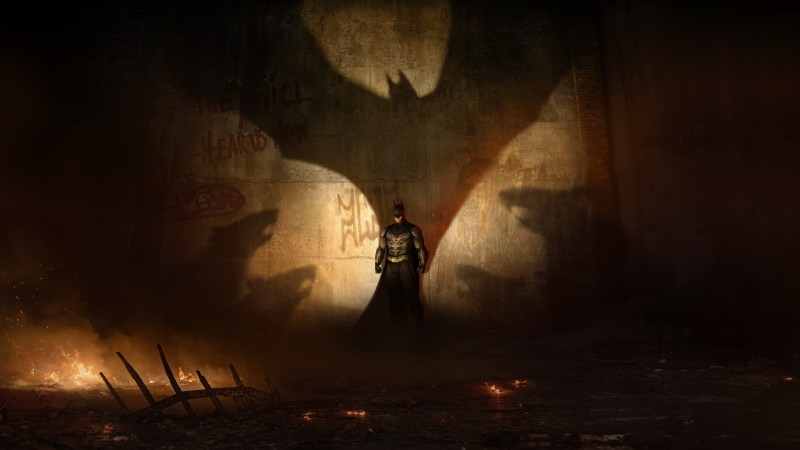In this week’s Videoguys Live episode, Gary introduces BirdDog’s exciting new X Series cameras. Join our exclusive webinar as Gary explores the cutting-edge BirdDog X1, X1 Ultra, and MAKI Ultra cameras, highlighting their compact design and exceptional performance. Discover the future of camera technology and secure your pre-order with Videoguys today! Stay ahead with BirdDog’s innovative camera lineup.
Watch the full webinar below:
[embedded content]
BirdDog X1 and X1 Ultra PTZ Cameras
|
|
Tally Light. It’s a halo Effect.
Professional results need professional tools. X1 and X1 Ultra sport the most visible and effective Tally system available. Up front with a large, daylight visible border, and out back with an interchangeable, illuminated numbering system. Your cast and crew will always know where to look to keep your audience engaged and your look polished.
AI Tracking. We welcome our AI overlords.
Every production could use a little help from a friend. The X1 and X1 Ultra keep your subject in focus with AI tracking technology, intelligently following your subject’s movements in real-time. Whether you’re orchestrating a live event, capturing spontaneous moments in a hybrid environment, or hunting down sports action, AI tracking helps you get well framed – without needing an octopus to run the controller.
NDI® | HX3. Enhanced Reliability on More Networks.
The X1 and X1 Ultra deliver superior network performance via NDI® | HX3 integration. You get significantly reduced network impact and excellent image quality, meaning its more friendly in more network environments. BirdDog’s NDI® | HX3 delivers quality and performance you can count on.
Integrated NDI® | HX Decoder. Let’s hook up.
The X1 and X1 Ultra are the world’s first PTZ cameras featuring an NDI® | HX* Decoder designed specifically for confidence monitoring, return feeds, or teleprompter usage. We’ve pulled all this connectivity into a single cable, radically simplifying how you interface with your equipment. Less gear. Less hassle. Whether you’re broadcasting live or delivering a CEO address, the integrated NDI HX decoder enables more brilliance with less setup. *NDI® | HX2 and NDI® | HX3 supported
Wi-Fi. Connected but not connected.
No need to use cables to capture every shot. On top of regular ethernet with PoE, X1 and X1 Ultra have built-in Wi-Fi functionality. Easily capture shots from spots where it’s hard to run cable, seamlessly integrating into any environment. Your set up just became a whole lot more flexible.
E-Ink Label. Get Inked.
The always-on e-Ink label on the X1 and X1 Ultra are game-changers. From network addresses for easy access to controls, this cool feature ensures that your set-up is clear and each camera easily identifiable even when the power is off.
Dual-Network Output
X1 and X1 Ultra combine NDIHX and SRT/RTMP protocols for seamless on-premises and remote/CDN connectivity, ensuring ultimate flexibility in both streaming set-ups and distribution.
NDI Ecosystem
X1 and X1 Ultra can be integrated into multiple software environments including TriCaster, vMix, Wirecast, ProPresenter, Epiphan Pearl, OBS, Vizrt Vectar, FOR.A, Broascast Pix, and many more
Baseband
X1 and X1 Ultra’s baseband HDMI connectivity means it can be easily included in your existing production set-up. Connect with tech like video switchers, SDI converters, HDMI products and many more.
Serial Control
Take control effortlessly with older control protocols, seamlessly integrating with your existing infrastructure including PTZ controllers and automation systems
USB Webcam
X1 and X1 Ultra feature USB-C for connecting directly to Zoom, Teams, and most apps that support a USB UVC input
Control Support
The X1 and X1 Ultra ship with their own IR remote, plus hardware control support for BirdDog PTZ keyboard, Skaarhoj, CyanView, Streamdeck, Loupedeck, and even Xbox controllers
API 2.0 Support
With support for RESTful API, there are so many ways to program your own control over X1 and X1 Ultra to create a totally integrated PTZ camera solution.
BirdDog Apps
X1 and X1 Ultra are fully compatible with the BirdDog family apps for routing, production, testing, and monitoring, remote shading, and more. This includes NDI PTZ Control (iOS), Central, and MV Pro
MAKI Ultra Box Camera
- 4K/60p
- 12X & 20X available
- Compact
- Super-fast Auto Focus
- HDMI/SDI/USB/IP
- NDI HX3
- On-board buttons

Compact. Yet Mighty.
The MAKI Ultra boasts a compact footprint helping you capture those unusual and engaging camera angles with ease. With MAKI Ultra you can deliver killer POV shots that put your audience right in the game at eSports events, or attach MAKI Ultra to a band rig to capture incredible angles of your drummers or instrumentalists, be they in a band or a house of worship. Wherever the action is, MAKI Ultra ensures you never miss a beat.
Super-Fast Autofocus. Keeping Pace with Your Vision.
It’s fast AF. MAKI Ultra’s super-fast autofocus is a game-changer for dynamic content and fast-paced environments. Equipped with a ToF sensor and powered by advanced automatic focusing algorithms, MAKI Ultra ensures rapid and accurate autofocus. Whether your subjects are zipping across the frame or moving closer and further away from the camera, MAKI Ultra keeps them sharp and in focus. Every. Single. Time.
4K60. Capture Every Moment with Ultra Detail.
With its 4K60 capabilities, MAKI Ultra expands your options on what and how you capture content. From fast-moving action shots to incredible detail in low-light sets, you can get all the detail thanks to MAKI Ultra’s high frame rate and advanced image processing capabilities.
NDI® | HX3. Enhanced Performance on More Networks.
MAKI Ultra delivers superior network performance via NDI® | HX3 integration. Significantly reducing network impact while maintaining excellent image quality, meaning it’s more friendly in more network environments. BirdDog’s NDI® | HX3 surpasses certification parameters, delivering quality and performance you can count on.
On-board Buttons. Let Your Digits Take Control.
MAKI Ultra’s intuitive physical buttons means that once you’ve set it up, you can just reach in and make quick adjustments to Zoom and Focus, and access to the onscreen menu. No awkwardly placed controls or a walk back to your controller. One and done. And on to the next task.
Baseband.
MAKI Ultra’s baseband 3G-SDI and HDMI connectivity means it can be easily included in your existing production set-up. Connect with tech like video switchers, SDI converters, HDMI products, and many more.
USB Webcam.
MAKI Ultra features USB-C for connecting directly to (deep breath) Zoom, Teams, Barco Clickshare, Google Meet, Webex, GoTo Meeting, BlueJeans, Slack, and more. Safe to say, if you have an app that works with a USB Web Camera, you can supercharge it with MAKI Ultra.
Colour Matrix.
Dialling in all your cameras changes your production quality from good to great. Level up your game with included Colour Matrix controls. MAKI Ultra has individual gain control over Red, Green, Blue, Cyan, Yellow and Magenta, all with 64 levels of control for ultra precision.
Flexible Power.
MAKI Ultra can be powered in several ways via the included DC power supply or PoE. With under 15W PoE requirement it makes it not only convenient but cost effective on infrastructure owing to its low power consumption.
Advanced Features in BirdUI.
BirdUI is our web browser based gateway to your camera. It gives access to all the functions of your MAKI Ultra, within a beautiful and intuitive interface on any device, anywhere on the network. BirdUI adds features including a dashboard for monitoring the camera and light/dark modes to suit your production environment.
NDI® Mute.
This function allows for muting of the NDI ® stream on the network. Perfect for meeting spaces, public spaces, classrooms, and any time some privacy is needed.














